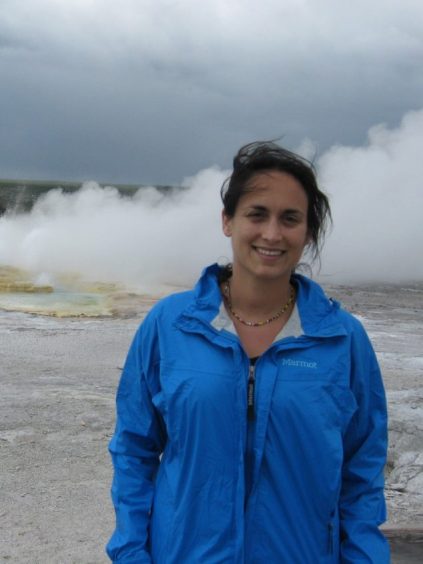Pauline L. Kamath
Lab Website: kamathlab.weebly.com
Professional Interests: Disease ecology and evolution; wildlife conservation; genomics; population genetics; phylogenetics
Teaching: AVS 249 Laboratory and Companion Animal Science, AVS 477/577 Zoonoses and Animal Health,
EES 598: Ecology, Evolution, and Everything Seminar
Research: My research focuses on understanding infectious disease transmission dynamics and host-pathogen adaptation in wildlife disease systems, particularly those involving an interface with domestic species. I specifically apply genetic/genomic and statistical approaches to address diverse research questions, including: (1) How do pathogens influence host genetic diversity? (2) What is the genetic basis for heterogeneity in host susceptibility? (3) Can disease transmission dynamics be quantified across hosts, space and time? (4) What are the eco-evolutionary drivers of disease transmission and spillover into new hosts, and can these factors be used to predict future spread? This work involves both field and laboratory components, and multidisciplinary analyses that integrate genetic information with ecological, immunological, and epidemiological data. Current wildlife disease systems include brucellosis in wildlife and livestock of the Greater Yellowstone Ecosystem, Mycoplasma ovipneumoniae in wild and domestic sheep and goats, anthrax in plains zebra of southern Africa, and avian pathogens in migrating and resident birds along the Palearctic-African Flyway. Other research interests include the investigation of population trends, structure, connectivity, and hybridization in threatened and invasive species.
Recent Publications:
Cassirer, E.F., K.R. Manlove, E.S. Almberg, P.L. Kamath, M. Cox, P. Wolff, A. Roug, J. Shannon, R. Robinson, R. Harris, B. Gonzales, R.K. Plowright, P.J. Hudson, P.C. Cross, A. Dobson, T.E. Besser (2017) Management of pneumonia in bighorn sheep: risk and resilience. Journal of Wildlife Management. doi: 10.1002/jwmg.21309
Kamath, P.L., J.T. Foster, K.P. Drees, G. Luikart, C. Quance, N.J. Anderson, P.R. Clarke, E.K. Cole, M.L. Drew, W.H. Edwards, J.C. Rhyan, J.J. Treanor, R.L. Wallen, P.J. White, S. Robbe-Austerman & P.C. Cross (2016) Genomics reveals historic and contemporary transmission dynamics of a bacterial disease among wildlife and livestock. Nature Communications 7: 11448. doi: 10.1038/ncomms11448
Kamath, P.L., A. Sepulveda & M. Layhee. Genetic reconstruction of a bullfrog invasion to elucidate vectors of introduction and secondary spread. Ecology and Evolution 6(15): 5221-5233 doi: 10.1002/ece3.2278.
Kamath, P.L., M.A. Haroldson, G. Luikart, D. Paetkau, C. Whitman & F.T. van Manen (2015) Multiple estimates of effective population size for monitoring a long-lived vertebrate: an application to Yellowstone grizzly bears. Molecular Ecology 24(22): 5507-5521. doi: 10.1111/mec.13398
Kamath, P.L., W.C. Turner, M. Küsters & W.M. Getz (2014) Parasite-mediated selection drives an immunogenetic tradeoff in plains zebras (Equus quagga). Proceedings of the Royal Society B: Biological Sciences, 281: 20140077. doi: 10.1098/rspb.2014.0077
Kamath, P.L., D. Elleder, L. Bao, P.C. Cross, J.H. Powell & M. Poss (2013) The population history of endogenous retroviruses in mule deer (Odocoileus hemionus). Journal of Heredity, 105(2): 173-187. doi: 10.1093/jhered/est088
Book Chapters:
Haroldson, M.A., P.L. Kamath, F.T. van Manen (2017) Adaptive capabilities and genetics. Eds. P.J. White, K.A. Gunther, F.T. van Manen. In: Yellowstone Grizzly Bears: Ecology and Conservation of an Icon of Wildness, p. 90-101, Yellowstone Forever, Yellowstone National Park.

